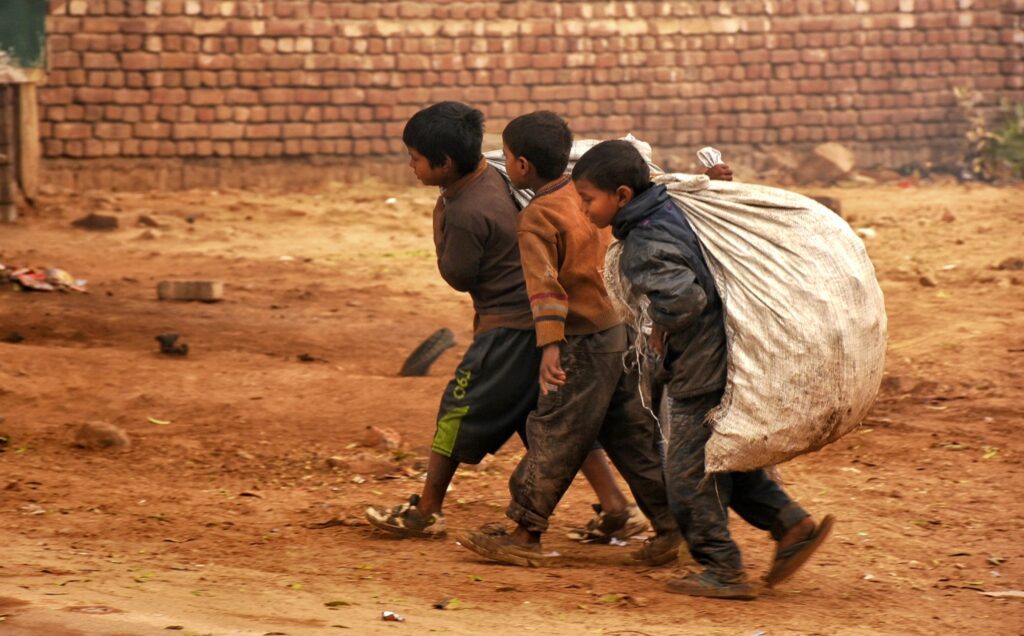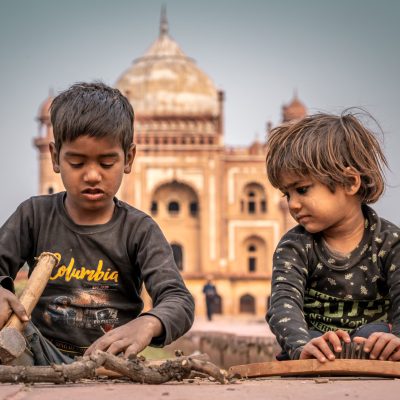Our Work
Globally, it is estimated that 1 in every 2 children worldwide are affected by poverty. Poverty is multi-dimensional, meaning there are different aspects that comprise poverty, beyond the lack of basic material resources. Poverty experiences during the childhood years, can continue to impact the person well into their adulthood, and further on to the next generation. Child poverty deprives the child of a life where their dignity and wellbeing are fully actualised.
What is Child Poverty?
Child poverty is often described as being absolute poverty (extreme poverty) or relative poverty, depending on the indicators of deprivation that a given community or country chooses to recognise.
Though the definitions of child poverty vary, there is an innate understanding that child poverty means a “lack of” something essential to the wellbeing, dignity and full realisation of rights of the child. For children, poverty can mean being deprived of material aspects of life like adequate nutrition, health, water, education, protection and shelter; as well as being deprived of intangible aspects such as experiencing love, care, positive values and ethics, and nurturing spirituality. As such, poverty is a violation of child rights and denies children the chance to survive, grow and thrive.

2 times more vulnerable
Children bear the greatest brunt of poverty; and, globally, are twice more likely to live in extreme poverty than adults.
1 in 2 people
To date, 1 in 2 people living in poverty is a child
250M+ children suffer
More than 250 million children suffer from 2 or more deprivations in Sub-Saharan Africa alone, while 75 million children are living in relative poverty in the world’s richest countries.
Life long damage
Child poverty causes lifelong damage to individual life outcomes with great costs for families and communities.
Precarious exposure to poverty
Children’s precarious exposure to poverty has been made worse by the COVID-19 pandemic with millions more falling into deeper poverty.
Denial of human rights
Child Poverty is a denial of human rights that uniquely affects children
What Causes Child Poverty?
The root structural factors which cause and drive child poverty in society, vary from community to community, country to country, as do the consequences of child poverty. However, it is clear that child poverty stems from structural policies and practices, as much as from socio-cultural factors. It also includes complex interactions involving the body, mind, soul and emotions.
The structural causes of poverty require changes in policies and practices that build our communities at micro and macro levels, from grassroots to global systems. Attitudes and behaviours such a greed, ignorance, fear and hatred, reflect internal poverty in the human heart, which we believe can be overcome.

The Solution
It the responsibility of the family, the child’s community, school, government, and all those in the child’s life – to prevent child poverty from occurring. When it occurs, the child needs to be shielded from the negative impacts of child poverty. Efforts must be made to seek ways to get children out of poverty and build supportive structures around them to ensure that she/he lives healthy, with dignity and free of involuntary poverty.
Since child poverty is multidimensional, the eradication of poverty is not merely an intellectual exercise of science, technology or economics — on the contrary, it involves an inner change in the individual as well.
It is for this reason that End Child Poverty recognises the necessity to transform the paradigm of development by taking cognisance of the spirituality, ethics and values that promote sustainable development.
Indeed, we believe that any poverty eradication initiative ought to go beyond conventional economic approaches to succeed. The measures must address not only the systemic structures, but also the root causes of the problems in the human heart, which stem from attitudes and perceptions such as greed, ignorance, hatred and fear.
Opportunities and solutions are present and can be leveraged towards ending child poverty. From global development progress and frameworks, to social and technological innovations; from positive spiritual values, to resources available in communities.
We believe that together, we can end child poverty worldwide.